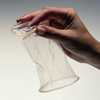Preventing Unintended Pregnancy during the Zika Virus Outbreak
Summary
Zika virus infection during pregnancy can cause microcephaly and other severe brain defects. Zika virus has also been linked to a number of other poor pregnancy outcomes. Avoiding or delaying pregnancy during a Zika virus outbreak is a way to reduce the number of pregnancies affected by Zika virus.
How to Prevent Unintended Pregnancy
If you decide that now is not the right time to have a baby, talk to your doctor or other healthcare provider about ways to prevent pregnancy. If you are sexually active, the best way to prevent unintended pregnancy is to use an effective form of birth control [PDF – 1 page] correctly and consistently every time you have sex. It is important to find a type of birth control that is safe, effective, and works for you.
Types of Reversible Birth Control
There are many different types of birth control; some have hormones and some don’t. Also, some methods are permanent while others are reversible.
Among reversible birth control methods, IUDs (intrauterine devices) and contraceptive implants are the most effective at preventing pregnancy. Because they do not require you to do anything once they are in place, they are as effective as permanent methods (e.g., vasectomy, tubal sterilization) and can last up to 3-10 years, depending on the method used. However they can be removed at any time if you decide you want to become pregnant. Because these methods can last for long periods of time, they are known as long-acting reversible contraception (LARC).
While IUDs and contraceptive implants don’t require you to do anything after they are in place, other methods require more effort – like with birth control pills you have to remember to take a pill every day, and with condoms you have to use them the right way every time you have sex. Because these methods require more effort for most women they are less effective than IUDs and implants at preventing pregnancy.
Highly effective reversible birth control methods

IUD
- Copper T intrauterine device (IUD) —This IUD is a small device that is shaped in the form of a “T”. Your doctor places it inside your uterus to prevent pregnancy. It can stay in your uterus up to 10 years.
- Hormonal IUD —This is a small T-shaped device, just like the Copper T IUD. It also needs to be placed inside your uterus by a doctor. It releases a small amount of hormone (progestin) each day to keep you from getting pregnant. It can stay in your uterus up to 3-5 years depending on which type you choose.
- Implant —The implant is a thin rod that is inserted under the skin of your upper arm. It is so small that most people cannot see it after it has been inserted. The rod contains a hormone (progestin) that is released into your body. The implant can work up to 3 years.

Pills
Moderately effective birth control methods
These methods are moderately effective —approximately 6 to 12 per 100 women can expect to get pregnant during the first year of use. These methods include
- Injection or “shot” —If you choose this method you will get a shot of a hormone (progestin) in the buttocks or arm every 3 months from your doctor.
- Birth control pills —also called, “combined oral contraceptives”, these pills are prescribed by a doctor and contain the hormones estrogen and progestin. A pill must be taken at the same time each day. If you are older than 35 years and smoke, have a history of blood clots or breast cancer, your doctor may advise you not to take the pill.
-

Patch
Progestin only pill —also called, “the mini pill” Unlike the combined pill, the progestin-only pill only contains one hormone, progestin. It is also prescribed by a doctor. It is very important that you take it the same time each day. This method, and other progestin-only birth control methods (e.g., hormonal IUDs, implants, or shots), may be a good option for you if you cannot take estrogen.
- Patch —The patch looks like a square bandage and is worn on the lower abdomen, buttocks, or upper body (but not on the breasts). This method is prescribed by a doctor. It releases the hormones progestin and estrogen. You put on a new patch once a week for three weeks. During the fourth week, you do not wear a patch, so you can have your period. Women who weigh more than 198 pounds may be more likely than women who weigh less to become pregnant when using the patch.
-

Diaphragm
Vaginal contraceptive ring —The ring releases the hormones progestin and estrogen. This method is prescribed by a doctor. You place the ring inside your vagina for three weeks, take it out for the week you have your period, and then put in a new ring.
- Diaphragm or cervical cap —These methods are placed inside your vagina to cover the cervix to block sperm. The diaphragm is shaped like a shallow cup. The cervical cap is a thimble-shaped cup. Before sex, you insert them with a spermicide to block or kill sperm. Visit your doctor for a proper fitting because diaphragms and cervical caps come in different sizes.
Least effective birth control methods

Male condom
These methods are least effective —12 or more per 100 women can expect to get pregnant during the first year of use. These methods include
- Male condom —A male condom is worn by a man and keeps sperm from getting into a woman’s body. Latex condoms, the most common type, help prevent pregnancy and sexually transmitted diseases (STDs), including HIV, and Zika, as do the newer synthetic condoms. “Natural” or “lambskin” condoms also help prevent pregnancy, but may not protect against Zika or STDs, including HIV. About 18 pregnancies per 100 women who use this method will get pregnant during the first year of use. Condoms are the only birth control that reduces your risk of pregnancy, Zika, and STDs. Condoms must be used correctly and consistently every time you have sex.
- Female condom —The female condom is worn by a woman and helps keep sperm from getting into her body. It is packaged with a lubricant and is available at drug stores. It can be inserted up to 8 hours before sex. Female condoms may help prevent STDs. About 12 pregnancies occur per 100 women who use female condoms.

Female condom
- Spermicides—These products work by killing sperm and come in several forms—foam, gel, cream, film, suppository, or tablet. Place them in your vagina no more than 1 hour before intercourse, and leave them in place at least 6 to 8 hours after you have sex. You can use a spermicide in addition to a male condom, diaphragm, or cervical cap. They can be purchased at drug stores. On average, 28 pregnancies occur per 100 women who use spermicides as their primary method of birth control.
- Natural family planning or fertility awareness—Understanding your monthly fertility pattern can help you plan to get pregnant or avoid getting pregnant. Your fertility pattern is the number of days in the month when you are fertile (able to get pregnant), days when you are infertile, and days when fertility is unlikely, but possible. If you have a regular menstrual cycle, you have about 9 or more fertile days each month. If you are practicing this method of birth control, you do not have sex on the days you are fertile, or you use a barrier method of birth control like a male or female condom on those days. Pregnancy rates can vary, on average, 24 pregnancies occur per 100 women who use natural family planning or fertility awareness as their primary method of birth control.
Permanent Methods of Birth Control
Less than 1 in 100 women who use permanent birth control methods will get pregnant each year. These methods include
- Female sterilization—tubal ligation or “tying tubes” A woman can have her fallopian tubes tied (or closed) so that sperm and eggs cannot meet for fertilization. The procedure can be done in a hospital or in an outpatient surgical center. You can go home the same day of the surgery and resume your normal activities within a few days. This method is effective immediately.
- Transcervical sterilization —A thin tube is used to thread a tiny device into each fallopian tube. It irritates the fallopian tubes and causes scar tissue to grow and permanently plug the tubes. It can take about 3 months for the scar tissue to grow, so you should use another form of birth control during this time. Return to your doctor for a test to see if scar tissue has fully blocked your fallopian tubes.
- Male sterilization —vasectomy. This operation is done to keep a man’s sperm from going to his penis, so his ejaculate does not contain sperm in it that can fertilize an egg. The procedure is done at an outpatient surgical center. The man can go home the same day. Recovery time is less than 1 week. After the operation, a man visits his doctor for tests to count his sperm and to make sure the sperm count has dropped to zero; this takes about 12 weeks. Another form of birth control should be used until the man’s sperm count has dropped to zero.
Emergency Contraception
Emergency contraception is NOT a regular method of birth control. Emergency contraception can be used if you did not use birth control during sex or if your birth control method failed (e.g., your condom broke or slipped off).
You can use this chart to learn more about the full range of birth control options and understand which one best fits your lifestyle and needs.
- Page last reviewed: April 27, 2017
- Page last updated: April 27, 2017
- Content source:





 ShareCompartir
ShareCompartir